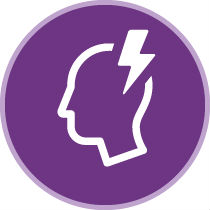Stroke

Serious Illness Definition
A stroke is one of the illnesses covered by our Serious Illness Benefit. We define a stroke as one diagnosed by an appropriate medical consultant which has resulted in lasting impairment to the nervous system. The lasting impairment is measured using the Modified Rankin Scale at least one month after the stroke. The Modified Rankin Scale must be at level 2 or above.
When the policy would and wouldn't pay out
The impact of a stroke depends on its size and where in the brain the stroke takes place. For example, someone who has a small stroke may experience only minor effects such as weakness of an arm or leg. But someone who has a more severe stroke may be left paralysed on one side, lose his or her ability to speak or, in severe cases, die.
The Modified Rankin Scale is a commonly used and internationally accepted scale for measuring the effects of a stroke. It measures how well a person can carry out daily activities after suffering neurological damage – including from a stroke. ‘Neurological damage’ means damage to the nervous system, which may include the brain.
This policy pays out when the impact of a stroke is deemed to be to at least level 2 which is described as having 'slight disability'.
See below further information about the Modified Rankin Scale and which levels are covered by this policy.
| Level | Description | Impact | Covered? |
|---|---|---|---|
| 0 | No symptoms at all | None | No |
| 1 | No significant disability | Able to carry out all usual activities despite some symptoms | No |
| 2 | Slight disability | Able to look after own affairs without assistance, but unable to carry out all previous activities | Yes |
| 3 | Moderate disability | Requires some help, but able to walk unassisted | Yes |
| 4 | Moderately severe disability | Unable to attend to own body needs without assistance and unable to walk unassisted | Yes |
| 5 | Severe disability | Bedridden, incontinent and requiring constant nursing care and attention | Yes |

